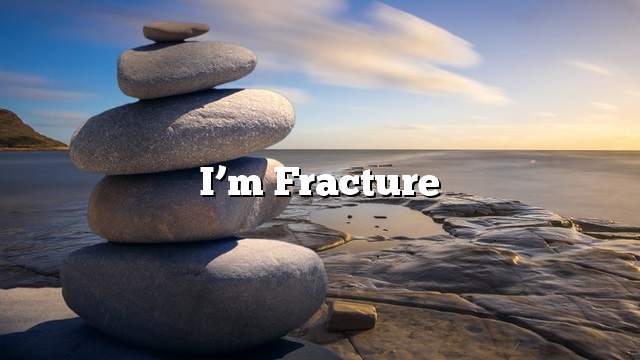I’m Fracture
The types of fractions are summarized in four cases:
1 – a simple or closed fracture: In this type of fractures the outer skin remains intact without
Torn or injured as there are no injuries in the membranes around the bone.
2 – open fracture: This fracture accompanied by wounds in the outer skin, and in some cases
The end of the broken bone may emerge from the opening of the wound opposite the fracture.
3 – double or compound fracture: In this fracture accompanied by injuries in the internal organs
Adjacent to the blood vessel, brain, lung or liver, depending on the location of the bone
Broken and close to the hurt member.
4 – Breaking the other branch (hair): It is one of the most fracture that affects children, and breaks it
The bone from the inside remains the layer that closes it intact (external peritoneum).
Symptoms of fractures:
The paramedic knows the presence of the fracture in the person with the following symptoms:
The basis of severe pain: Across the broken bone occurs a large increase in severity
Pain The pain is most severe at or near the fracture site, and the pain increases
Large when trying to move the injured part 0 or even touch it
Swelling of the affected area: the area surrounding the affected part, and its heat appears
The skin is blue due to swelling
Change the shape of the affected member: The member takes a shape other than its natural form, such as being shorter than
Natural or has a quirky shape at the position or an abnormal angle of broken member
An abnormal movement occurs in the affected member: a crackling may be heard at the site of the injury
When breaking the place of the fracture by hand, and often do not resort to this, because it may cause
A rupture of the tissue around the fracture and the severity of the pain may cause the patient to faint
First aid for fractures:
• Use the patient and take the appropriate position to start the ambulance.
• Do not give the person anything through the mouth in the case of fractures requiring action
Surgery.
• Bleeding associated with fracture (if bleeding) should be controlled and not washed or examined
It should be covered with a clean, sterile bandage to stop bleeding.
• The patient is not moved by the spinal cord injury for fear of rupture of the surrounding tissue
This will cause paralysis, and if it has to be moved, it is done by three or four people.
• If a joint fracture occurs, the member should not be placed in a straight line.
• Do not attempt to return the broken bone to normal.
• Connect the twisted member with a compressor belt to prevent it from moving, or use it involuntarily in any
Something can cause pain.
• Monitoring of vital signs of the infected
• The patient may be given painkillers such as ibuprofen. Until a car arrives
Ambulance or taking the injured to hospital.
